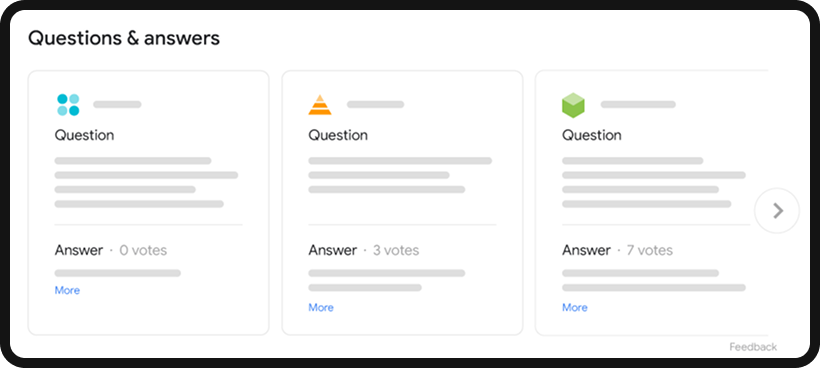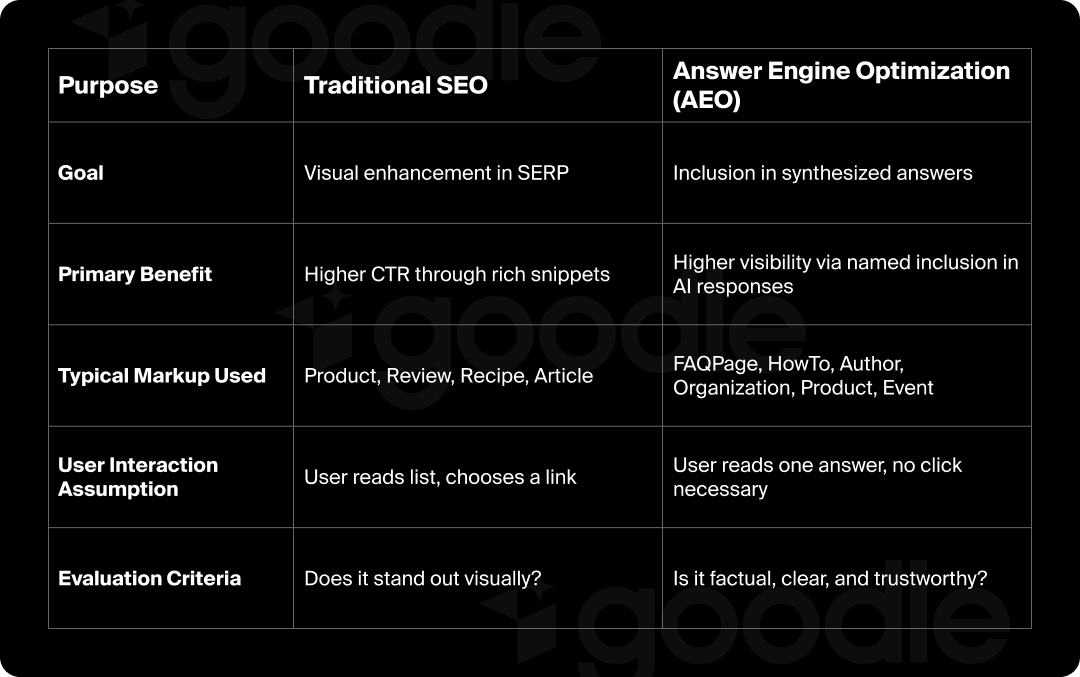

Organic Search has always been competitive—the first step has always been to select your strategy and put your pieces on the board. New strategies are being created to match the rapidly changing rules of the game. But can an old tactic be the key to future success?
Over the past decade, SEO professionals have been trained to think in terms of blue links: rank higher, get more clicks. But that entire model is now under pressure from answer engines like ChatGPT, Gemini, Perplexity, Claude, and even Google’s own AI Overviews. These models don’t serve users a list of links. They generate a single, synthesized response—and only a handful of brands make it into the answer.
That shift has massive implications for visibility. In AI-powered search, you’re either named in the answer, or not visible at all.
This is where structured data comes in. Long treated as a best practice for winning rich snippets or boosting click-through rates, structured data now plays a more foundational role: it’s how answer engines understand, verify, and surface your content. Without it, your site may be unreadable—or worse, ignored entirely.
In this blog, we’ll explore how structured data fuels Answer Engine Optimization (AEO), what’s changing in the schema landscape, and how brands can use this signal to unlock visibility in an answer-first world.
Historically, structured data helped traditional search engines like Google enhance results with rich snippets—think star ratings, recipe cards, or product prices. It was all about driving more attention in a list of links.
But AEO is different. In answer engine environments, there is no list. There's one answer.
Answer engines rely on LLMs that synthesize content across the web in response to natural language queries. To do that, they need:
Structured data supports all three. It provides machine-readable clarity about what your page says, who it’s from, how it should be categorized, and whether it matches what the model is looking for.

To visualize this, think of the typical answer engine workflow:
At stages 2 and 3, structured data is critical. It helps the model connect the dots faster and with more confidence. If your product, article, or answer is properly marked up, the model can more easily determine relevance, trustworthiness, and semantic fit—and therefore include your content in its synthesized answer.
That’s why structured data is now a visibility multiplier. It’s not just helping you win better snippets—it’s helping you get into the answer.
Not all schema is created equal—and not all of it works the same way in traditional search versus answer engines.
Compared to the SEO world, structured data in AEO has a very different job: helping AI understand your content well enough to repeat it back as an answer. That means it’s not just about making your content more clickable—it’s about making it more comprehensible and credible to machines trained on language and logic.

This distinction matters, because brands that are only optimizing for rich results are missing a huge opportunity: being selected by AI systems as a source of truth.
As AI-generated answers become the default, there’s growing interest in what some experts are calling LLM schema—structured data that is intentionally designed not just for search crawlers, but for large language models.
While there’s no formal markup language for LLMs (yet), some patterns are emerging:
In other words, the best structured data today is optimized not just for indexing, but for inclusion in generated content.
A study of 18 million U.K. websites found that AI Overviews produce higher CTRs than classic featured snippets—indicating users are more likely to click when your content is cited in AI-generated summaries.
Google reports that links included in AI Overviews receive more clicks than they would as traditional results.
Semrush data supports this: AI Overviews are driving 13% of all queries—a jump from ~6.5% in January 2025 to 13.1% in March 2025.

Another analysis of referral patterns revealed a 145x increase in traffic from ChatGPT since mid-2024. These traffic streams tend to bring higher intent visitors with better session engagement .
AEO-driven visitors often show lower bounce rates, longer sessions, and stronger conversion intent, according to SEO and AEO specialists (Source). CMS Wire notes conversion rates from AI referrals can outperform traditional search sources.
When an AI engine—Perplexity, ChatGPT, Gemini—cites your site as a source, it functions as a virtual endorsement. This boosts brand credibility at scale, leading to stronger engagement and conversion potential
Structured data is only valuable if it’s implemented correctly—and consistently. But the good news is that getting started doesn’t require a full replatform or months of dev time. Most AEO-focused schema can be deployed in days, not weeks, especially if you prioritize the right pages and formats.
Here’s a step-by-step breakdown of how to get structured data working for your brand in an answer-first environment.
Start with content that:
Use tools like Google Search Console, Perplexity dashboards, or ChatGPT plugin queries to pinpoint which pages already earn impressions—and which ones could benefit from visibility in AI-generated responses.
Focus on schema types that map well to AI synthesis and answer engines. Some of the most AEO-relevant include:
Reference Schema.org for the latest full definitions.

While Google also supports Microdata and RDFa, JSON-LD is now the recommended format for most use cases. It keeps your code clean and separates your structured metadata from your HTML, reducing the risk of markup breaking when the page design changes.
Most modern CMS platforms (WordPress, Shopify, Webflow) support plugins or module-level schema injection. For custom sites, JSON-LD can be injected server-side or via GTM for simpler use cases.
Structured data can unlock visibility across answer engines—but it’s not a silver bullet. Even the most precise schema can fall short if it’s implemented incorrectly, misaligned with content, or misunderstood by models.
Here are the most common mistakes and limitations to watch for when optimizing structured data for AEO.
This is the most basic—and most frequent—error. Whether caused by CMS plugins, template updates, or poor QA, broken structured data silently blocks your content from being interpreted correctly by both search engines and AI models.
What to do:
If your structured data says one thing and your on-page content says another, that disconnect creates trust issues—not just with search engines, but with AI systems designed to triangulate facts.
For example:
Best practice: Schema should reinforce content, not contradict it. AI models prioritize consistency and clarity.
It’s tempting to tag every possible element on a page—but overdoing it can dilute your signals or trigger penalties. Google has stated that spammy, irrelevant, or misleading structured data can lead to manual actions or suppression of rich results.
This is especially risky with:
Keep schema tight, targeted, and aligned with actual on-page value.
Structured data increases your eligibility—but it doesn’t guarantee inclusion in AI-generated answers, rich results, or voice responses.
Answer engines weigh many factors:
Structured data is an amplifier, not an override. Use it to clarify your content for machines—but pair it with editorial excellence and consistent publishing.
Once the schema is live, teams often move on—but changes to content, CMS behavior, or plugins can break implementation silently. And because AI engines update rapidly, visibility can fluctuate without notice.
What to monitor regularly:
Tip: Treat schema like you would technical SEO—it needs its own version of uptime monitoring.
Structured data is one of the most controllable signals in the AEO toolkit—but it only works if implemented with precision and maintained with discipline. The more consistent and transparent your schema is, the more likely AI engines will trust your content enough to include it.
As answer engines continue to redefine how users search, structured data is becoming more than a technical enhancement—it’s emerging as a foundational visibility layer.
We’re already seeing early signs of what’s ahead:
In this context, structured data is no longer optional. It’s how brands speak machine.
As answer engines become the default search interface for millions, the brands that prepare their content to be understood—and reused—will be the ones that get seen.


